This is a partial list of forts in Nepal.

Kathmandu, officially Kathmandu Metropolitan City, is the capital and the most populous city of Nepal with 845,767 inhabitants living in 105,649 households in 2021 and 2.9 million people in its urban agglomeration. It is located in the Kathmandu Valley, a large valley in the high plateaus in central Nepal, at an altitude of 1,400 metres.
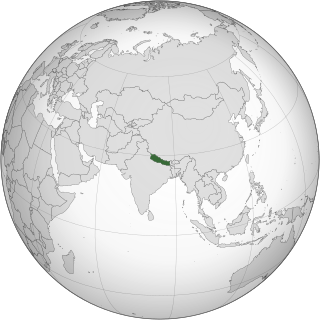
Nepal, formerly the Federal Democratic Republic of Nepal, is a landlocked country in South Asia. It is mainly situated in the Himalayas, but also includes parts of the Indo-Gangetic Plain, bordering the Tibet Autonomous Region of China to the north, and India in the south, east, and west, while it is narrowly separated from Bangladesh by the Siliguri Corridor, and from Bhutan by the Indian state of Sikkim. Nepal has a diverse geography, including fertile plains, subalpine forested hills, and eight of the world's ten tallest mountains, including Mount Everest, the highest point on Earth. Nepal is a multi-ethnic, multi-lingual, multi-religious and multi-cultural state, with Nepali as the official language. Kathmandu is the nation's capital and the largest city.

Maharajadhiraj Prithvi Narayan Shah (1723–1775) was the last ruler of the Gorkha Kingdom and first monarch of the Kingdom of Nepal. Prithvi Narayan Shah started the unification of Nepal.

The Kathmandu Valley, is a bowl-shaped valley located in the Himalayan mountains in Nepal. It lies at the crossroads of ancient civilizations of the Indian subcontinent and the broader Asian continent, and has at least 130 important monuments, including several pilgrimage sites for Hindus and Buddhists. There are seven World Heritage Sites within the valley.

The unification of Nepal, also known as Expansion of Gorkha Kingdom, officially began in 1743 AD after King Prithvi Narayan Shah of Gorkha launched an aggressive annexation campaign seeking to broaden his own kingdom's border. After conquering the Nepal Mandala, which consisted of the different city-states of the Kathmandu, Lalitpur, Kirtipur and Bhaktapur, Shah moved his hilly capital in Gorkha to the fertile and wealthy city of Kathmandu and adopted the name Nepal for the entire Gorkha Empire.
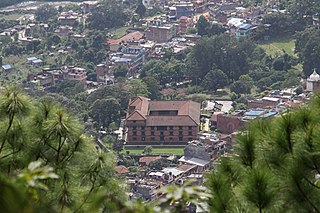
Gorkha District, a part of Gandaki Province, is one of the 77 districts of Nepal, which is the fourth largest district of Nepal and connected historically with the creation of the modern Nepal and the name of the legendary Gorkha soldiers. The district, with Gorkha Municipality as its district headquarters, covers an area of 3,610 km2 (1,390 sq mi) and has a population of 252,201 according to the 2021 Nepal census. Gorkha district is the site of the Manakamana Temple. The temples of Gorakh Nath and Gorakh Kali are found in the district. Several major rivers—the Chepe, Daraudi, Marsyangdi, Budi Gandaki, and Trishuli—run through the district.

Nepal Sambat, also spelled as Nepala Sambata, is the lunisolar calendar used by the Newari people of Nepal. The Calendar era began on 20 October 879 AD, with 1142 in Nepal Sambat corresponding to the year 2021–2022 AD. Nepal Sambat appeared on coins, stone and copper plate inscriptions, royal decrees, chronicles, Hindu and Buddhist manuscripts, legal documents and correspondence. Nepal Sambat is declared a national calendar in Nepal, is used mostly by the Newar community whilst Bikram Sambat (B.S) also remains a dominant calendar throughout the country.

Bimalendra Nidhi is a Nepali politician and a senior leader of Nepali Congress. He is the former Deputy Prime Minister of Nepal and Minister of Home Affairs of Nepal. Nidhi has also served as the Vice-president and General secretary of Nepali Congress, the governing party of the Nepal for tenures of four consecutive years each.
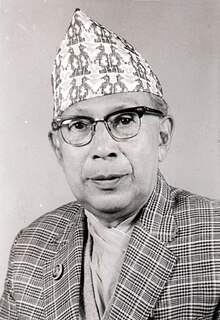
Daya Bir Singh Kansakar was a Nepalese social worker and the first blood donor in Nepal. He was also the chief founder of Paropakar Organization, the country's earliest social service organization.

Sindhuli Gadhi is an historical fort and tourist attraction in central Nepal. Sindhuli Gadhi is famous for the battle between the then Gorkha Army and the British troop headed by Captain Kinloch. The Gorkha force under the command of Khajanchi Bir Bhadra Upadhyay and Sardar Banshu Gurung defeated the British troop in November 1767.
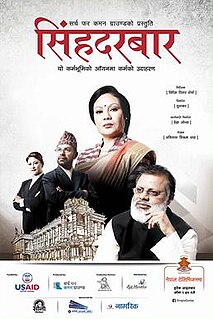
Singha Durbar is a 2015 Nepalese television series. It revolves around the story of Nepal's first Female Prime Minister who undergoes various challenges in her quest to establish a governance system of transparency, accountability and collaborative leadership
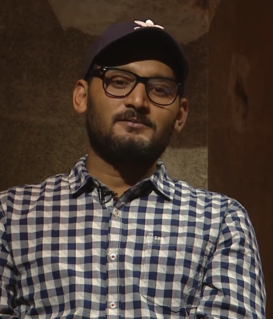
Bipin Karki is a Nepalese film and theatre actor known for his work in Nepali cinema.
Chhetan Gurung was a Nepalese film director and writer known for his work in Nepali cinema. He has written scripts for Nepali films including November Rain (2014), Classic (2016), A Mero Hajur 3 (2019), and Prem Geet 3. Gurung debuted as a director from Damaru Ko Dandibiyo (2018), his last film, Prem Geet 3 which he directed in 2019 that will be released posthumously. He died from liver problems on 9 September 2020.

The Chisapani Gadhi is a fort in Bhimphedi, Makwanpur that was built around 1744–1745 AD. The fort was controlled by the Sen Dynasty but after the Gorkha Kingdom captured Makwanpur they used the fort for the military, administrative, trade and immigration purposes. King Prithvi Narayan Shah used it to create an economic blockade to the Kathmandu Valley. According to historians, the fort had a court, a check post, and an office for a local governor. During the Anglo-Nepalese War, commander Ranabir Singh Thapa deployed many soldiers inside the fort. But the forces did not directly face the East India Company. Thapa at the Makwanpur Gadhi stopped the Company troops from getting into the fort, and they subsequently went moved to capture the Sim Bhanjyang instead.
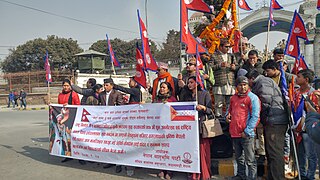
Prithvi Jayanti is an observance annually celebrated on 11 January to commemorate the birth of King Prithvi Narayan Shah who was the first king of unified Nepal. In the mid-18th century, he set out to unify small kingdoms which would become present-day Nepal. During the observance, many people add a garland to statues of Shah, participate in the parades, and remember his contribution to Nepal. Prithvi Jayanti was celebrated as a public holiday from 1951 until its abolishment in 2006. However, some local governments in Gorkha District and Nuwakot District have declared Prithvi Jayanti to be a public holiday. There is some pressure from some Nepalese citizens to reinstate it as a federal holiday.

The Battle of Sindhuli was fought on 6 November 1767 near Sindhuli Gadhi. The battle was part of the unification of Nepal led by Prithvi Narayan Shah, King of Gorkha.
The Constitution of Nepal recognizes all mother tongues as national languages of Nepal.

The Jit Gadhi is a fort in Butwal, Lumbini Province, Nepal.

The Makwanpur Gadhi is a fort in Makwanpur District, Bagmati Province.

Hariharpur Gadhi is a fort in Sindhuli District, Bagmati Province.